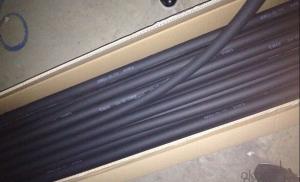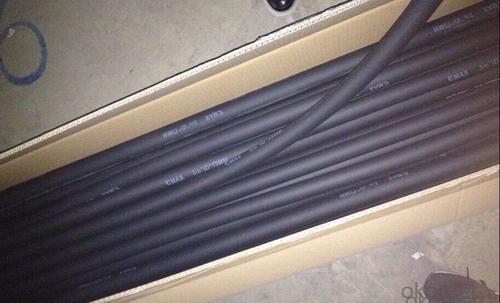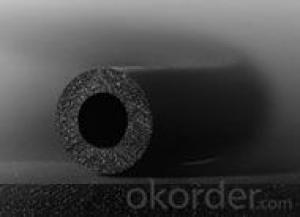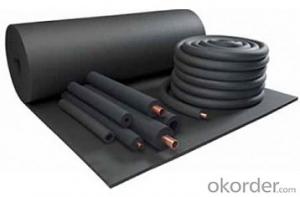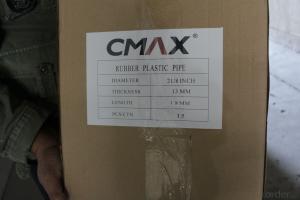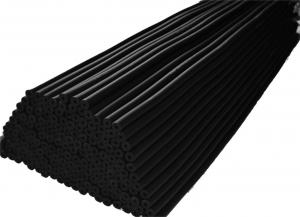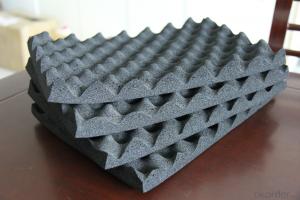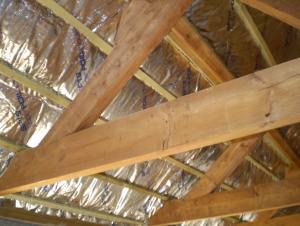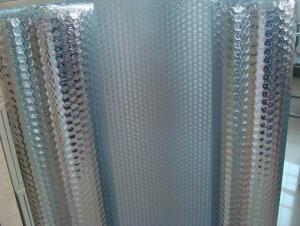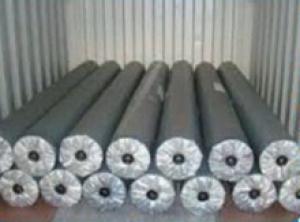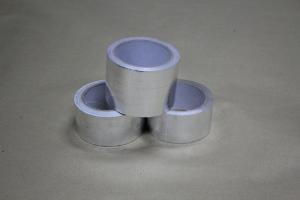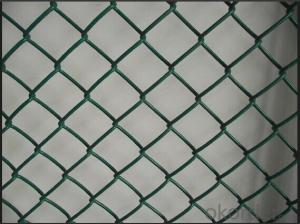Aluminum Foil Facing Rubber Insulation Pipes FM Certified
- Loading Port:
- China Main Port
- Payment Terms:
- TT or LC
- Min Order Qty:
- -
- Supply Capability:
- -
OKorder Service Pledge
OKorder Financial Service
You Might Also Like
1. Flexible Rubber Plastic Insulation Material Product Description
Rubber plastic is a high quality heat-insulating and heat-preservation material which use but yronitrile rubber and polyvinyl chloride(NBR,PVC) as main raw materials. The production process includes mixing, tensing and continuous extruding , heating and foaming.
2.Main Features of Rubber Plastic
-Lower heat-conductivity-Higher fire-blocking performance-Damp-proof and Water-proof-Softness-Neat and -Easy to install easy handing and storage-Good flexibility and tenacity
3.Rubber Plastic Images
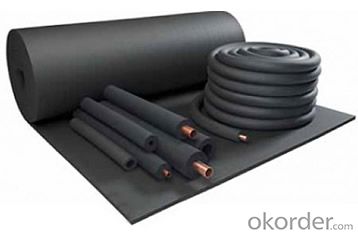
4.Rubber Plastic Specification --Rubber Plastic Sheet
Density(kg/m3) | 40-90 | ||||
Thickness(mm) | 10 mm | 15 mm | 20 mm | 25 mm | 30 mm |
Length (m) | 20 | 20 | 10 | 10 | 10 |
Width (m) | 1.5 | 1.5 | 1.5 | 1.5 | 1.5 |
5.FAQ
①How about your company?A world class manufacturer & supplier of HVAC materials,is one of the large-scale professional investment building materials production bases in China.
②How to guarantee the quality of the products?We have established the international advanced quality management system,every link from raw material to final product we have strict quality test;We resolutely put an end to unqualified products flowing into the market. At the same time, we will provide necessary follow-up service assurance.
③How long can we receive the product after purchase? In the purchase of product within three working days, We will arrange the factory delivery as soon as possible. The pecific time of receiving is related to the state and position of customers. Commonly 7 to 10 working days can be served.
- Q: Is it possible to reuse aluminum foil facing after cleaning it?
- <p>Yes, you can reuse aluminum foil facing after washing it, provided it is thoroughly cleaned and dried. Ensure that all residue is removed and it is completely dry to prevent bacterial growth. However, it's important to note that the foil's effectiveness as a barrier may decrease with each use, and it's generally recommended to use a fresh piece for food safety and hygiene, especially when in contact with food.</p>
- Q: What is the function or use of aluminum foil facing in construction or insulation?
- <p>Aluminum foil facing is used primarily for thermal insulation in construction and HVAC systems. It reflects radiant heat, reducing heat transfer and improving energy efficiency. It also serves as a vapor barrier, preventing moisture from passing through insulation, which can reduce its effectiveness. Additionally, aluminum foil facing can provide a clean, finished appearance and protect the insulation material from damage and contamination.</p>
- Q: Is aluminum foil a healthier alternative to plastic wrap?
- <p>Aluminum foil may have some health benefits over plastic wrap due to its non-porous nature, which prevents the absorption of flavors and odors. It's also heat resistant, making it suitable for cooking and reheating food. However, aluminum foil doesn't cling to surfaces as well as plastic wrap, making it less convenient for sealing food. Additionally, there are concerns about aluminum exposure, though the risk is considered low when used in cooking. It's important to note that the health benefits of using aluminum foil over plastic wrap are not definitively established, and both have their pros and cons.</p>
- Q: The user is asking if it's possible to use aluminum foil with a reflective side to create a container for holding a salad.
- <p>Yes, you can use aluminum foil facing to make a salad bowl. Simply take a large piece of aluminum foil, preferably the shiny side facing out, and shape it into a bowl by folding the edges up and around. Ensure the foil is large enough to hold the salad and has no sharp edges. This makeshift bowl is great for picnics or outdoor events, but remember it's not meant for long-term storage or cooking purposes.</p>
- Q: What are the potential health hazards related to using paper plates in comparison to aluminum foil facing?
- <p>There are generally no significant health risks associated with using paper plates instead of aluminum foil facing. Paper plates are made from food-grade materials and are designed to be safe for contact with food. However, it's important to ensure that the paper plates are free from any harmful chemicals or dyes, and are not contaminated during production or storage. Aluminum foil facing, when used properly, is also safe, but it can leach aluminum into food if heated excessively or used with acidic foods. Both options are generally considered safe, but it's always best to use products from reputable manufacturers and follow usage guidelines.</p>
- Q: This question asks for methods to clean oil stains from the aluminum foil facing of a surface.
- <p>To remove oil stains from aluminum foil facing, start by scraping off any excess oil with a plastic scraper or a butter knife. Then, mix a solution of warm water and dish soap. Apply the solution to the stained area and let it sit for a few minutes. Use a soft cloth or sponge to gently scrub the area. Rinse with warm water and dry thoroughly. For stubborn stains, you can use a mixture of baking soda and water to create a paste, apply it to the stain, let it sit for 15 minutes, then scrub and rinse. Always test cleaning methods on a small, inconspicuous area first to ensure no damage occurs.</p>
- Q: What are the types of food that should not be cooked with aluminum foil facing?
- <p>There are certain types of food that should not be cooked with aluminum foil facing. Acidic foods, such as tomatoes and citrus fruits, can react with the aluminum and potentially release harmful compounds. Foods high in salt or spices can also cause a reaction with the aluminum, leading to the leaching of aluminum into the food. Additionally, cooking acidic foods at high temperatures can increase the risk of aluminum contamination. It's best to avoid wrapping these types of foods in aluminum foil when cooking, or to use the dull side of the foil facing away from the food.</p>
- Q: How should aluminum foil be properly stored when not in use to maintain its quality and usability?
- <p>The best ways to store aluminum foil when not in use include keeping it in a cool, dry place away from direct sunlight to prevent degradation. It's advisable to store it in its original box or a resealable plastic container to protect it from moisture and air exposure. Some people also use a paper towel roll as a dispenser by placing the aluminum foil around it, ensuring the shiny side is out for easy access. Keeping it in a drawer is also common, but it's important to prevent it from crumpling or tearing.</p>
- Q: What are the optimal practices for storing food using aluminum foil, considering the direction of the foil's facing?
- <p>The best way to store food in aluminum foil is to ensure that the dull side faces the food and the shiny side is on the outside. This is because the dull side is more heat resistant and less likely to contaminate the food with any potential chemicals from the foil. When wrapping food, seal the edges tightly to keep air and moisture out, which helps in preserving the freshness and quality of the food. Always use aluminum foil as a single-use item to avoid any potential transfer of bacteria or contaminants from previous uses.</p>
- Q: What are the potential hazards or dangers of using aluminum foil facing in construction or other applications?
- <p>Using aluminum foil facing can pose certain risks, particularly in construction. It may not provide adequate insulation, leading to energy inefficiency. Additionally, it can trap moisture, causing mold or mildew growth and potential structural damage. Aluminum foil facing can also be a fire hazard if it's not properly installed or if it comes into contact with electrical wiring. Moreover, it may not be as durable as other materials, leading to a shorter lifespan and the need for more frequent replacements. It's crucial to consider these factors and consult with professionals when deciding to use aluminum foil facing in any application.</p>
Send your message to us
Aluminum Foil Facing Rubber Insulation Pipes FM Certified
- Loading Port:
- China Main Port
- Payment Terms:
- TT or LC
- Min Order Qty:
- -
- Supply Capability:
- -
OKorder Service Pledge
OKorder Financial Service
Similar products
Hot products
Hot Searches
Related keywords
